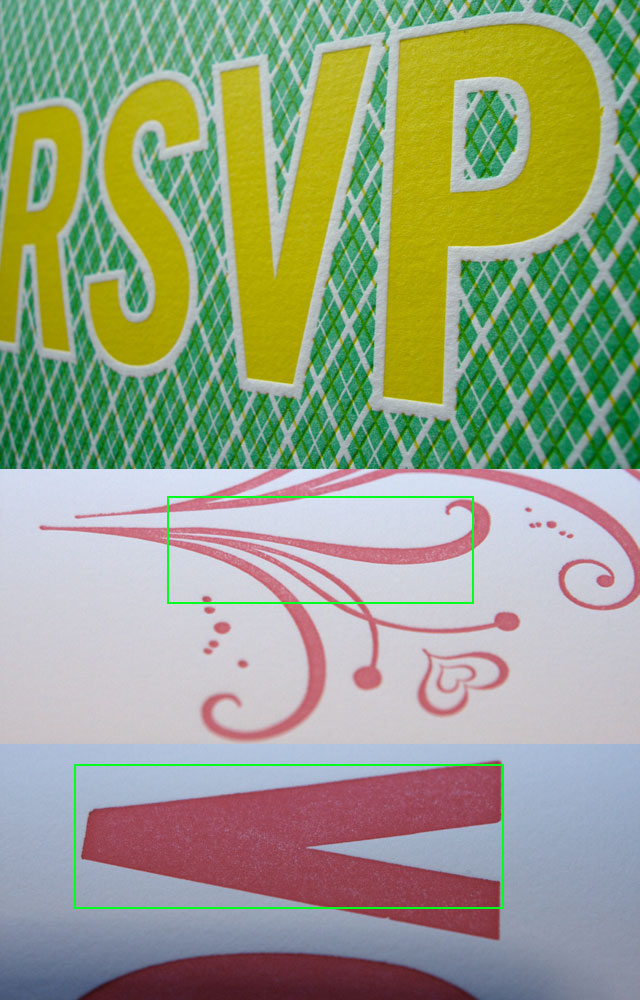Is this called a Hickey?
OK I feel like im always asking the questions but sense I have only been printing for 3 months I have no advice to give
I need all of your help again. I feel like I can never get a solid color to print. The picture shows the top image which is what I want to happen; the two bottom ones is what is happening. I get parts of the print that are speckled white etc.. I’m pretty sure its has nothing to do with ready made because everything seems the same there isnt one spot where this doesn’t happen. The edges seem to be what I want but you head in toward the center of image or the type and it gets sort of faded. What do I do?
12x18 C&P
Acrylic Spinks Ink
Rubber rollers; have 3 but have always used just 2
Mag plates on type high wood
second image is wood type
Do I need to thin out my ink add more ink, etc… I feel like I have try it all

there are a few things you can try…
definitely use that third roller!
try skip feeding the press and letting the plate re-ink a couple of times before feeding the next sheet.
add a little bit of tint base to your ink to thin it out, but go easy on this.
increase your packing.
good luck!
Skip feeding will work great for small runs, but if you have to run a large job, you might just need to carry more ink. More ink equals darker color, so you will need to mix your ink with opaque white to compensate. Increase packing a little and you might have it.
By the way, what you are experiencing is not a hickey. When you get some lint or hard ink stuck to the cut and it leaves a little bullseye on your print, that’s a hickey. The’re not as much fun as the hickeys in high school.
Looks like the die/plate needs more ink. Several things can cause this problem, so check out that roller contact to plate is even and correct, that pressure is sufficient between paper and platen, and finally, use more ink. Use all 3 form rollers.
Depending on conditions and materials, the ink being used may work better if it is thinned out by adding an ink extender of some sort (Van Son Smooth-lith, for example). As mentioned by an earlier poster, adding tint base (mixing white, also called pantone white) can allow you to add more ink without increasing the color’s value—better than opaque white, recommended by another poster, which affects how the color appears on the sheet.
The above responders gave good advice. Build up your packing a bit and make sure you have ample ink on the disk.
I did some skip feeding on my Windmill last week. It took a few times to get the rhythm but it sure was sweet once I saw the good ink coverage and I did have to use the rider roller.
Casey
iLP